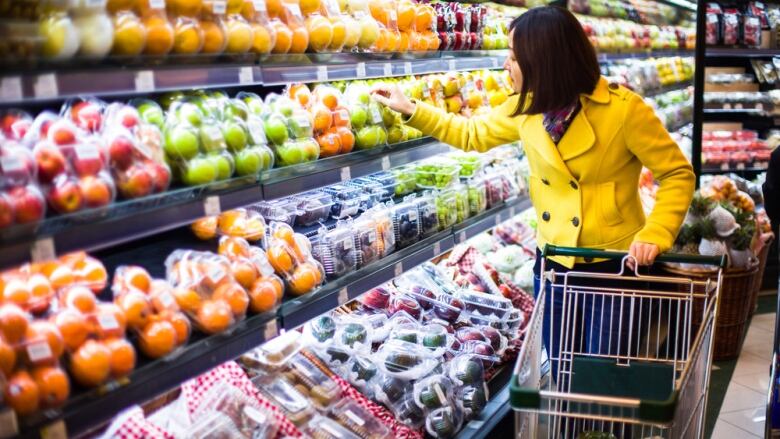4 ways your groceries are shrinking
Marketplace investigates how manufacturers reduce how much you get
Think your grocery bags are lighter than they used to be? You’re not the only one.

Many Canadians are feeling the effects of rising food prices. And even if your grocery bill has not gone up, your money may not be going as far as it used to.

"Consumers are very, very sensitive to price changes," says Kate White, a professor of marketing and behavioural science at the University of British Columbia.
"There certainly are cases where marketers will want to sort of figure out ‘how much can I change this product, and in what ways can I change this product, without upsetting the consumer?’"
Here are four ways that packages may hold less than they seem.
There are fewer portions
Just because you’re bringing home the bacon, doesn’t mean there’s as much as there used to be.

Manufacturers cite rising costs as part of the reason our sandwiches are shrinking.
Portions are smaller
Some companies include the same number of portions, but they’re smaller.

Unilever Canada, which makes Red Rose, says it has redesigned its teabag and reformulated its recipe to be richer.
There’s more air in the package

Lay’s potato chips reduced the amount of chips from 200 g to 180 g last year; a 10 per cent decrease. PepsiCo, which makes Lay’s, says it made the reduction because of rising costs.
Containers no longer contain standard measurements

Some products that have long come in standard, familiar sizes — such as dairy cartons of 250 ml and 500 ml -- have been shrinking.
Now those containers are slightly smaller; they run 237ml and 473ml, respectively.
Where have you spotted shrinking products? Tweet your examples to @cbcmarketplace using the hashtag #grocery.
